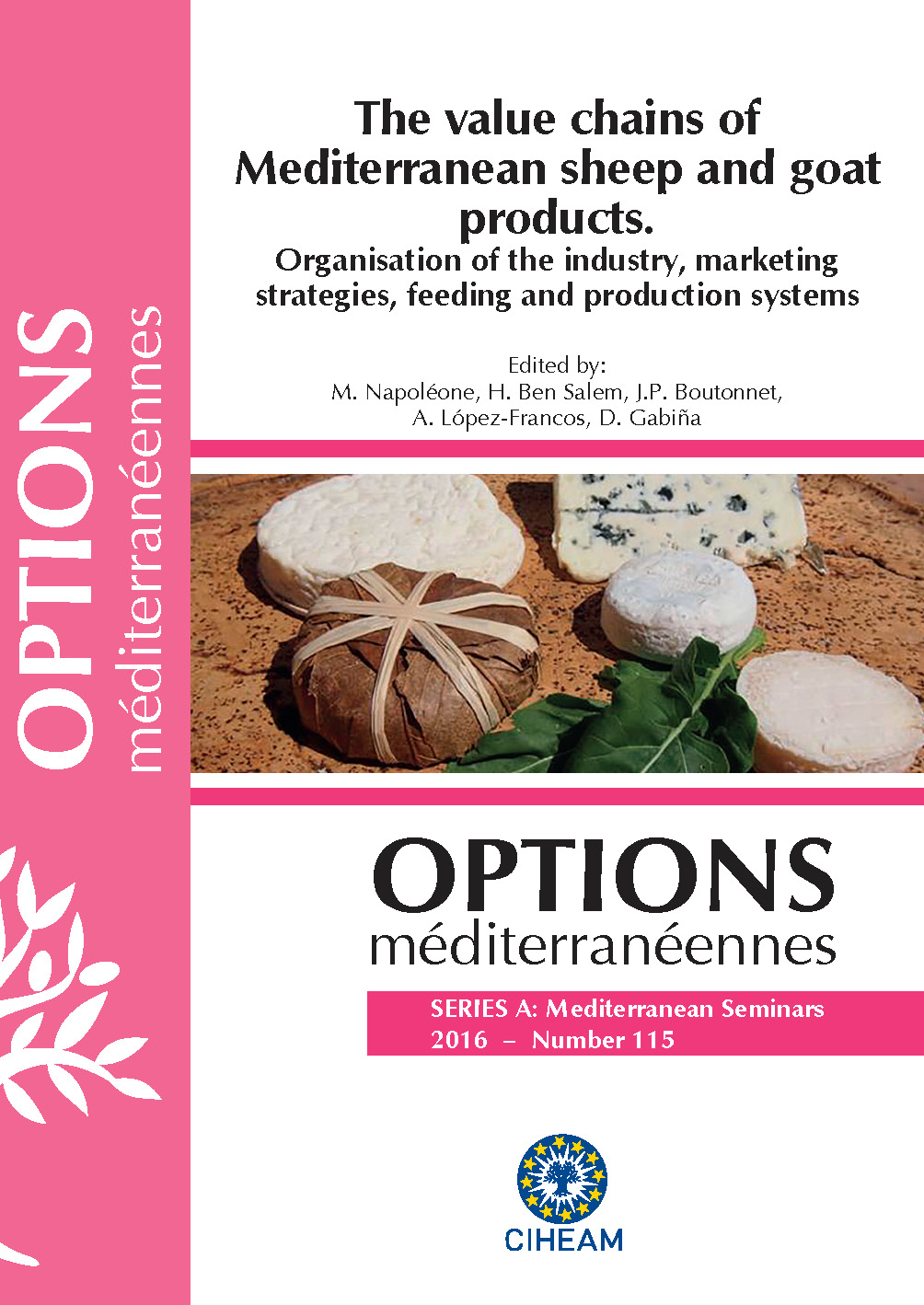| Article précédent | p. 287-291 | Article suivant |
Determination of tocopherol and carotenoid contents in ST muscle of suckling lambs using fresh or lyophilised muscle
The aim of the study was to compare tocopherol and carotenoids contents in lyophilised and fresh meat to reduce the time and chemical reactives used in the analytical procedure. Twenty ewe-lamb pairs grazed on pastures (723, 570, 147 and 6.6 μg/g DM of β-carotene, lutein, α- and γ-tocopherol contents respectively; Grazing) and 19 pairs were raised indoorswith ewes receiving pasture hay (24, 100, 11 and 1.1 μg/g DM of β-carotene, lutein, α-, and γ-tocopherol contents respectively; Hay). After slaughter (live-weight: 11 ± 0.8 kg), both Semitendinosus muscles were excised to determine carotenoids and tocopherol contents in lyophilised or fresh meat. The contents of α-tocopherol and lutein determined using lyophilised meat were 2.8-fold and 21.3-fold greater than using fresh meat (P<0.001). The content of β-carotene was undetectable whereas γ-tocopherol content was not detected in lyophilised meat and near 0 in fresh meat. Regarding the effect of the ewe’s diet, α-tocopherol content was greater in grazing than in hay treatment, regardless of the method of extraction (1.35 vs. 0.83 μg/g FM in lyophilised and 0.56 vs. 0.21 μg/g FM in fresh meat). Lutein content was greater in grazing than in hay treatment lambs in lyophilised meat (0.28 vs. 0.08 μg/g FM) but did not differ in fresh meat. The content of γ-tocopherol content was greater in grazing than in hay treatment lambs in fresh meat (0.003 and 0.001 μg/g FM, respectively, P<0.05). Consequently, it would be more appropriate to determine α-tocopherol and lutein contents in lyophilised meat, although γ-tocopherol content was not detectable.
L’objectif de l’étude consiste à comparer les teneurs des tocophérols et caroténoïdes entre le muscle frais et lyophilisé pour réduire le temps d’analyse et les réactifs chimiques employés. Pour aboutir à cet objectif on a utilisé 20 paires brebis-agneau alimentés sur pâturage (570, 723, 147 et 6,6 μg/g MS de lutéine, β-carotène, α-, γ-tocophérol respectivement ; pâturage) et 19 paires ont été alimentés à l’intérieur. Les brebis ont reçu le foin des prairies (24, 100, 11 et 1,1 μg/g MS de lutéine, β-carotène et α-tocophérol, respectivement ; (foin). Après l’abattage (poids vif : 11 ± 0,8 kg), les muscles Semitendinosus ont été extraits pour déterminer les caroténoïdes et tocophérols dans le muscle frais et le muscle lyophilisé. Les teneurs en α-tocophérol et lutéine déterminés au niveau du muscle lyophilisé ont été de l’ordre de 2,8 et 21,3 fois supérieur que ceux dans le muscle frais (P<0,001). La teneur en β-carotène a été indétectable alors que la teneur en γ-tocophérol n’a pas été détectée au niveau du muscle lyophilisé et était proche de 0 dans le muscle frais. Concernant l’effet du régime alimentaire des brebis, le teneur en α-tocophérol a été supérieur chez les agneaux Pâturage que chez les agneaux Foin dans le muscle lyophilisé (1,35 vs. 0,83 μg/g MF) et le muscle frais (0,56 vs. 0,21 μg/g MF). Le teneur en lutéine a été supérieur chez les agneaux Pâturage que chez les agneaux Foin au niveau du muscle lyophilise (0,28 vs. 0,08 μg/g MF) mais elle était similaire pour le muscle frais. Le teneur en γ-tocophérol a été supérieur chez les agneaux Pâturage que chez les agneaux Foin dans le muscle frais (0,003 et 0,001 μg/g MF, P<0,05). En conclusion, il est plus approprié de déterminer la concentration en α-tocophérol et en lutéine dans le muscle lyophilisé, cependant, le teneur en γ-tocophérol n’a pas été détectable.
- [ Afficher ]
- [ Télécharger ]
- [ Exporter la citation ]
Vous pouvez télécharger la citation au format :
- [ Imprimer ]
-
Mots-clés
CAROTENOIDE, FOURRAGE, OVINCiter cet article
Blanco M., Molino F., García-Durillo M., Ripoll G., Lobón S., Sanz A., Joy M. Determination of tocopherol and carotenoid contents in ST muscle of suckling lambs using fresh or lyophilised muscle. In : Napoléone M. (ed.), Ben Salem H. (ed.), Boutonnet J.P. (ed.), López-Francos A. (ed.), Gabiña D. (ed.). The value chains of Mediterranean sheep and goat products. Organisation of the industry, marketing strategies, feeding and production systems. Zaragoza : CIHEAM, 2016. p. 287-291. (Options Méditerranéennes : Série A. Séminaires Méditerranéens; n. 115). Joint Seminar of the Subnetworks on Nutrition and on Production Systems of the FAO-CIHEAM Network for Research and Development in Sheep and Goats, 2015/06/16-18, Montpellier (France) . http://om.ciheam.org/om/pdf/a115/00007290.pdf



